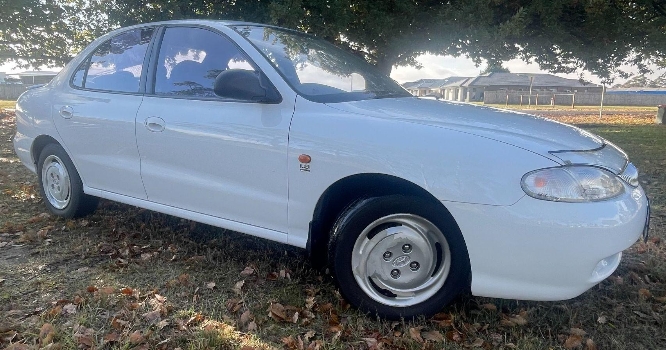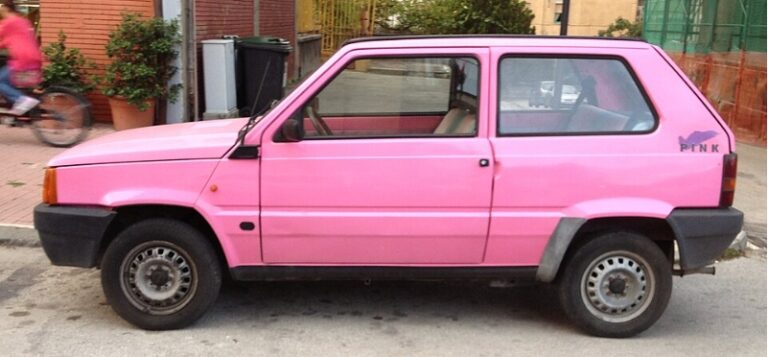The Humble Catalyst: Charting the Evolution of the Hyundai Lantra
In the grand chronicle of the automotive industry, some nameplates are icons, synonymous with performance or luxury. Others, however, are quiet catalysts, the foundational pillars upon which a brand’s global empire is built. The Hyundai Lantra falls firmly into the latter category. While its successor, the Elantra, is now a household name worldwide, the Lantra was the crucial stepping stone that transformed Hyundai’s image from a purveyor of budget-basic transport to a genuine contender in the fiercely competitive compact sedan market. Its evolution over a single decade tells the story of a company’s burgeoning ambition, engineering prowess, and relentless pursuit of quality.
The Genesis: First Generation (J1) Lantra (1990-1995)
By the late 1980s, Hyundai had found global success with its subcompact Excel but yearned for legitimacy in the larger, more profitable compact class dominated by Japanese titans like the Toyota Corolla and Honda Civic. The company’s answer was the J1 platform, which debuted in South Korea in 1990 as the Elantra. However, upon its export to markets like Australia and Europe in 1991, a naming conflict arose. In Australia, Mitsubishi sold a high-trim level of its Magna sedan called the “Elante,” while in Europe, the Lotus “Elan” sports car created a similar trademark issue. To sidestep legal battles, Hyundai pragmatically renamed its new contender the “Lantra.”
Design and Engineering (1990-1993)
The first-generation Lantra was a product of its time: a clean, conservatively styled three-box sedan with a distinctly angular and functional aesthetic. Its design, while in-house, bore a subtle influence from its Japanese rivals, aiming for inoffensiveness rather than flair. This was a deliberate strategy to appeal to pragmatic buyers who prioritized value and reliability.
Under the skin, the Lantra represented a significant leap forward from the Excel. While early models relied on powertrain technology licensed from Mitsubishi, it was a proven and effective partnership. The initial engine lineup was headlined by a Mitsubishi-sourced 1.6-litre DOHC (Double Overhead Camshaft) 16-valve four-cylinder engine. This unit, producing a respectable 84 kW (113 hp), was praised for its free-revving nature and provided the Lantra with competitive performance. It was paired with either a five-speed manual or a four-speed automatic transmission. In some markets, a more basic 1.5-litre engine from the Mitsubishi Orion family was also available.
.
THIS could come in handy for your auto garage (and everywhere else!):

.
Trim Levels:
The Lantra was typically offered in two primary trim levels, designed to cater to different budget points:
- GL: This was the entry-level model. Standard features were modest by today’s standards but competitive for the era, often including a tachometer, cloth trim, and a basic radio cassette player. Power steering was a common feature, but air conditioning and power windows were usually optional extras.
- GLS: The upmarket GLS trim added a suite of desirable features. It typically included full wheel covers, body-coloured bumpers, a higher-grade interior fabric, a four-speaker sound system, and often made air conditioning, power windows, and central locking standard equipment.
The Mid-Cycle Facelift and Hyundai’s Independence (1993-1995)
A 1993 facelift for the 1994 model year marked a pivotal moment not just for the Lantra, but for Hyundai as a whole. The cosmetic updates were mild, consisting of a revised grille, new headlights, and updated taillights. The real story, however, was under the bonnet.
Hyundai introduced its first-ever independently designed and manufactured engines, the “Alpha” and “Beta” series. The Lantra became a key platform for these new powerplants. The Mitsubishi 1.6-litre was replaced by Hyundai’s own 1.6-litre “Beta” engine, and a new, more powerful 1.8-litre “Beta” engine was added to the top of the range, producing around 94 kW (126 hp). This move was a declaration of intent, signaling Hyundai’s transition from a company reliant on licensed technology to a self-sufficient automotive manufacturer. This updated Lantra laid the groundwork for the brand’s future, proving it could engineer and produce its own reliable and competitive powertrains.
A New Curve: Second Generation (J2/RD) Lantra (1995-2000)
If the first Lantra was a conservative statement of competence, the second generation was a bold proclamation of style. Launched in 1995, the J2 Lantra (later referred to as the RD series) shed every trace of its predecessor’s angular design in favor of the prevailing “bio-design” trend of the mid-1990s. It was characterized by a lithe, curvaceous body with rounded edges, ovoid headlights, and a flowing silhouette. This dramatic aesthetic shift was aimed at a younger, more style-conscious demographic.
Significantly, the J2 Lantra expanded the lineup beyond just a sedan. In 1996, Hyundai introduced the Lantra Sportswagon, a stylish and practical station wagon variant. This was a masterstroke, broadening the Lantra’s appeal to small families and active lifestyle buyers who needed the extra cargo space. The Sportswagon featured a unique rear-end design and became a very popular model in markets like Australia.
Powertrain and Refinement:
The second-generation Lantra was powered exclusively by Hyundai’s own “Beta” series engines, further cementing the company’s engineering independence.
- 1.8-litre DOHC: This was the standard engine for much of the J2’s life, carried over from the previous generation but refined for better smoothness and efficiency. It offered a solid balance of power and economy.
- 2.0-litre DOHC: Introduced later in the model’s life, this engine offered a significant boost in torque and horsepower (around 102 kW / 137 hp), giving the Lantra more confident performance, particularly when paired with the automatic transmission.
Hyundai also focused heavily on improving refinement. The J2 chassis was stiffer, the suspension was tuned for a more comfortable ride, and noise, vibration, and harshness (NVH) levels were significantly reduced, making the Lantra a much more pleasant car for daily driving and long journeys.
Trim Levels:
The trim structure was revised to reflect the car’s more sophisticated positioning:
- SE: Replacing the GL as the base model, the SE came with a higher level of standard equipment than its predecessor, including driver’s airbags and power steering as standard in most markets.
- GLS / SLX: These mid-range trims (naming varied by market and year) were the volume sellers. They added features like alloy wheels, air conditioning, power windows and mirrors, and often an improved audio system. Anti-lock brakes (ABS) became available, often as an option.
- Limited / Sports: In some markets, special edition or range-topping models appeared, often bundling luxury features like leather trim, a sunroof, and unique alloy wheels to test the waters for a more premium offering.
The RD2 Facelift (1998-2000)
In late 1998, the Lantra received a significant facelift, often referred to as the RD2. This update is best known for its controversial front-end restyling. The clean, ovoid headlights were replaced with a more complex, quad-headlight design set within a much more aggressive and scalloped front bumper and grille assembly. The rear received updated taillights and a new boot lid design. While the new look was intended to be more dynamic, it proved divisive among critics and consumers alike.
Inside, the interior received subtle updates to materials and trim. The most important change, however, was the widespread adoption of the 2.0-litre engine as the standard powertrain in many markets, giving the facelifted model a welcome performance edge.
The End of an Era: The Lantra’s Legacy
By the year 2000, the automotive landscape had changed, and so had Hyundai. With its global presence firmly established, the company sought to unify its branding. The trademark conflicts that had necessitated the “Lantra” name had become less of an obstacle. With the launch of the all-new, third-generation model (codenamed XD), Hyundai made the decision to retire the Lantra nameplate in markets like Australia and Europe and globally consolidate its compact car under the original “Elantra” name.
The Hyundai Lantra’s decade-long journey from 1990 to 2000 is a microcosm of Hyundai’s own meteoric rise. It began as a cautious, Mitsubishi-powered entry into a tough market segment and evolved into a stylish, self-powered, and feature-rich family of vehicles that included both a sedan and a wagon. The Lantra successfully challenged public perception, proving that a Korean car could be more than just cheap; it could be reliable, well-equipped, and even stylish. It was the humble catalyst that did the hard yards, building the brand recognition and customer trust that would allow its successor, the Elantra, to become the global sales phenomenon it is today.







